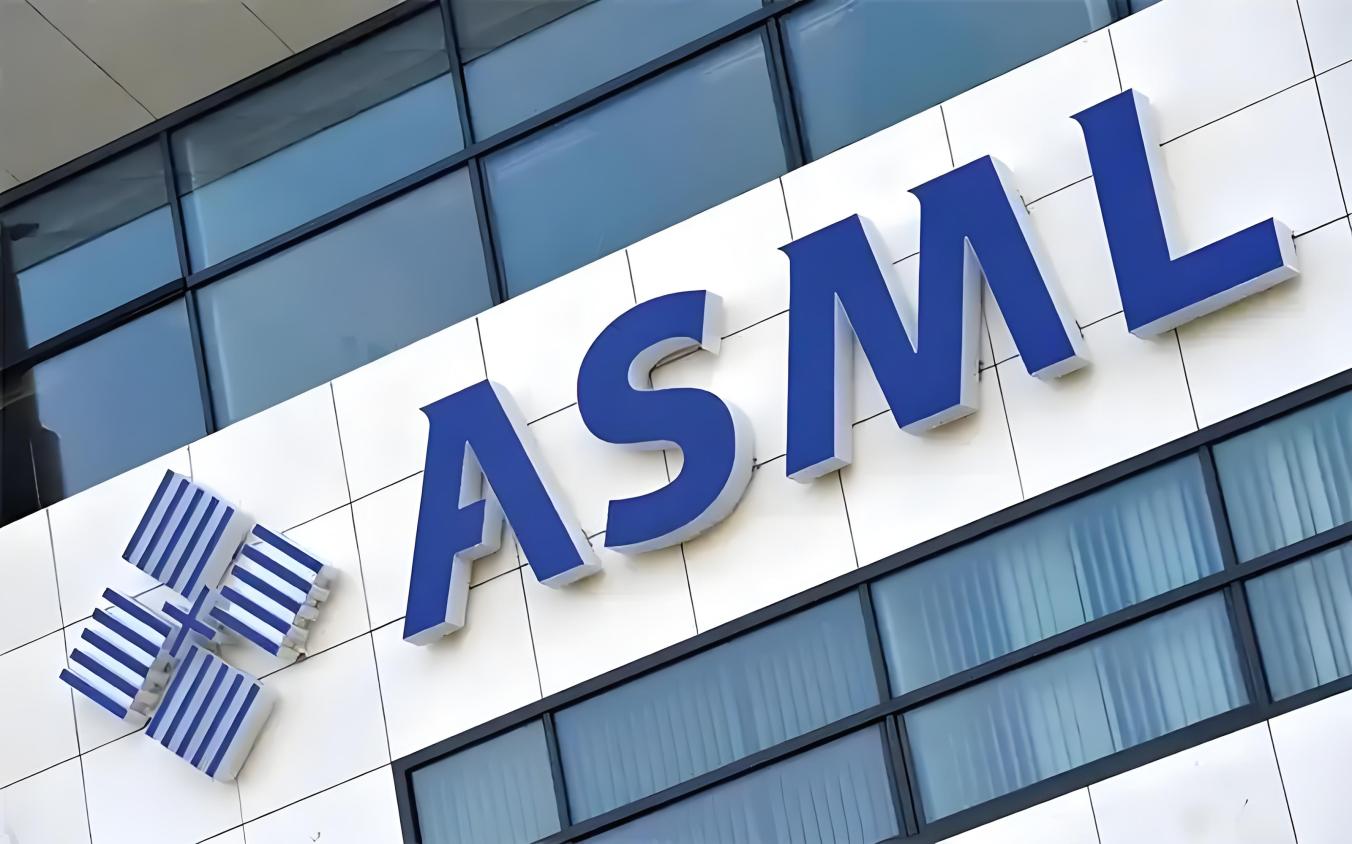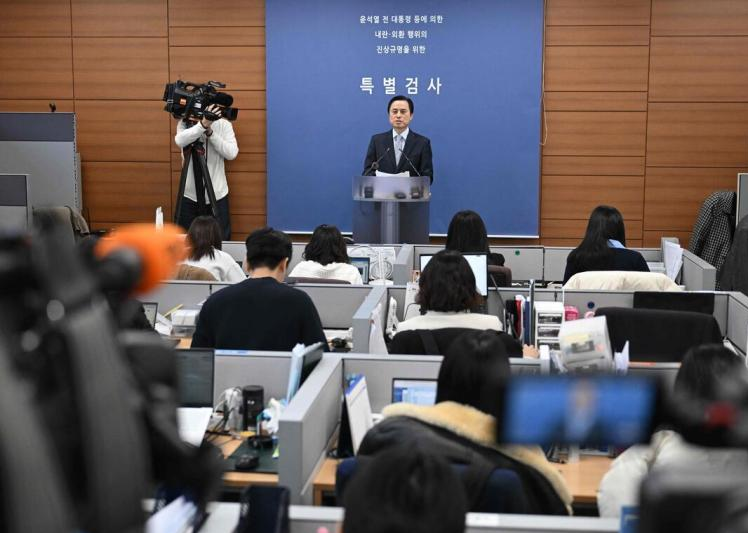
On July 16, 2025, ASML, the global leader in lithography machines, released its second-quarter financial report, with sales reaching 7.69 billion euros and orders amounting to 5.54 billion euros, both exceeding market expectations. However, Christophe Fouquet, the company's CEO, unexpectedly withdrew the growth forecast for 2026 in the earnings statement, noting that macroeconomic and geopolitical risks, particularly the uncertainty surrounding U.S. tariff policies, could prevent the company from achieving growth. This statement caused ASML's stock price to plummet by over 7% on the same day, marking the largest single-day drop since April.
Looking at the financial data, ASML's full-year net sales in 2024 were 28.3 billion euros, a year-on-year increase of 2.69%, but net profit fell by 3.05% to 7.6 billion euros. Net sales in the first quarter of 2025 ranged from 7.5 to 8 billion euros, with an annual forecast of 30 to 35 billion euros and a gross profit margin of 51% to 53%. Despite the steady short-term performance, the withdrawal of the 2026 growth forecast has exposed long-term concerns.
The U.S. plan to impose a 30% tariff on European goods poses a direct threat to ASML. The price of its high-end EUV lithography machines may rise from 250 million euros to 325 million euros, leading to a surge in customers' procurement costs. Moreover, tariffs could affect supply chain costs, especially for components relying on U.S. suppliers (such as Cymer's EUV light sources). Roger Dassen, the CFO, pointed out that tariffs not only directly drive up equipment prices but may also trigger retaliatory measures from other countries, further disrupting the global supply chain.
The United States has restricted ASML's export of EUV lithography machines to China through the "Foreign Direct Product Rule" and pressured the Dutch government to expand export controls on DUV equipment. In September 2024, the Netherlands required ASML to implement export licensing for 1970i and 1980i models of DUV lithography machines, resulting in the proportion of revenue from the Chinese market dropping sharply from 47% in the third quarter of 2024 to 27% in the fourth quarter. UBS predicts that ASML's revenue in China will decline by 24% in 2025 and another 11% in 2026.
ASML's predicament is a microcosm of the Sino-U.S. technological competition. The United States has restricted technology exports to China in the name of "national security," while ignoring the global nature of the semiconductor industry chain. For example, ASML's EUV lithography machines contain key components such as optical systems from Germany's Zeiss and light sources from the U.S.'s Cymer. This "decoupling" policy not only harms Chinese enterprises but also forces ASML into a dilemma in technological research and development and market expansion.
The global semiconductor market is undergoing structural adjustments. Major customers such as Intel and Samsung have cut capital expenditures due to the slowdown in demand for AI chips, leading to increased fluctuations in ASML's orders. Although the demand for advanced manufacturing processes driven by AI (such as those below 3nm) is still growing, the weakness in the memory chip market (such as Micron's delay in EUV investment) has offset part of the growth momentum.
ASML regards the next-generation High NA EUV lithography machine as the core of future growth. This equipment can achieve a single exposure with a line width below 20nm, which is 50% more efficient than existing EUV technology. In the fourth quarter of 2024, ASML confirmed revenue from two High NA devices and delivered the third to Intel. However, the High NA EUV has a unit price exceeding 400 million U.S. dollars and requires supporting new photoresists and mask technologies, so its commercialization process may be delayed until after 2026.
To mitigate the impact of export restrictions, ASML plans to establish a maintenance center in Beijing to realize localized procurement of components. In addition, the company is helping Chinese customers improve their manufacturing capabilities by upgrading existing DUV equipment (such as TWINSCAN NXE:3400B) to maintain market share. But these measures are difficult to make up for the long-term losses caused by the EUV equipment embargo.
ASML's predicament has accelerated the regionalization of the semiconductor equipment supply chain. China is promoting the research and development of EUV light sources (such as the 3.42% conversion efficiency LPP technology from the Shanghai Institute of Optics and Fine Mechanics) and DUV lithography machines through the "domestic substitution" strategy, and it is expected to achieve mass production of 28nm equipment in 2026. The European Union, through its "Chip Act," has invested 43 billion euros to support the local semiconductor industry and reduce its reliance on ASML.
If growth stagnates in 2026, ASML may face a chain reaction such as declining profit margins and reduced research and development investment. Analysts predict that its gross profit margin may drop from 53% to below 50%, and the long-term growth target (44 to 60 billion euros in revenue by 2030) will be more difficult to achieve. In addition, competitors such as Canon and Nikon are seizing market share through mid-to-low-end DUV equipment, further squeezing ASML's living space.
ASML's warning is not only a crisis for a single enterprise but also a reflection of the deep division of the global semiconductor industry chain. Against the backdrop of the Sino-U.S. technological game, it is difficult to solve problems simply by relying on technological monopoly or political pressure. Only through open cooperation and rule reshaping can a "lose-lose" situation be avoided. For ASML, finding a balance between technological innovation, geopolitical risks, and market demand will be the key to whether it can cross the growth gap in 2026. And this process will also profoundly affect the future pattern of the global semiconductor industry.

YTN TV of South Korea reported on Tuesday (December 16) that the South Korean court plans to make a ruling on the charges of former President Yoon Suk Yeol for obstructing justice on January 16, 2026.
YTN TV of South Korea reported on Tuesday (December 16) tha…
On December 7, a new round of intense military conflict bro…
Recently, US media disclosed that the Pentagon is planning …
From three launch failures and a brush with bankruptcy to n…
Recently, a major piece of news has emerged in the US polit…
Against the backdrop of the Federal Reserve's third rate cu…